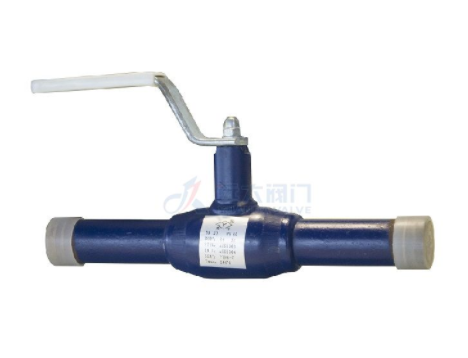Structural Characteristics of Welded Ball Valves
Keep reading for more information about the structural characteristics of welded ball valves.

1. The design of frame shaft fixed ball of welded ball valve
The balls of ball valves can be divided into two kinds: fixed balls and floating balls. Domestic products generally are in the floating ball structure, the ball being tightly pressed on the sealing surface of the outlet end under the pressure of the media to reach the purpose of the seal. Once the inlet and outlet pressure difference of the valve body is large, it is often very difficult to open the valve because of the large torque. Welded ball valves adopt high-strength forge steel for stems, rotating smoothly and being supported by the stainless steel bearings coated with PTFE.
Since the pivot-supported stems can absorb the thrust generated by the pressure of the pipeline media and can reduce the friction between the valve balls and the valve seats, the torque operating the concave door is still very small even under the full pressure difference condition and the ball valves still switch freely.
2. Structure of welded ball valve
The valve body of the ball valve is produced by welding six partially forged shells after assembly. The structure is compact and the whole ball valve is integrated. At present, the large-caliber ball valves used in production are mostly split three-piece structures, and each part is connected by bolts. Compared with the three-piece ball valve, under the same strength, the wall thickness of the welded ball valve forge piece can be made to be very thin, the valve weight can be reduced by a quarter, and the resistance to pipeline bending and extrusion is enhanced.
3. The valve stem and secondary valve seat seals of welded ball valves
The sealing material PFFE in the upper area of the valve stem of the welded ball valve is a low-friction and aging-resistant material with long service life. The valve stem of welded ball valve is also equipped with a sealing grease injection system. Even if foreign matter enters the ball valve seat and damages the sealing surface, it can still be injected with special sealing grease through the secondary valve seat to maintain the seal. Conventional ball valves do not have a sealing grease injection structure. Once the sealing surface is damaged and internal leakage occurs, we can only replace the entire ball valve.

4. Design of rotary valve seat of welded ball valve
When the ball valve is nearly being fully closed or just opened, the narrow point between the ball valve and the valve seat is scoured at high speed due to the fluid being throttled into high-speed turbulent flow, which becomes the most severely worn area of the seal of the valve seat. The valve seat upstream and downstream of the welded ball valve is rotated 15 degrees by the paddles on the valve ball so that the entire sealing surface of the valve seat is washed by fluid in turn, and the same part is washed again after the valve is opened or closed 12 times. The wear of the entire valve seat remains the same and the working life is greatly extended.
5. Pressure release device of welded ball valve
Automatic Internal Pressure Relief of the Valve Cavity and Pressure Relief of the Double Block Mid-cavity
Although ball valves have the up and down double valve seats partition seal, it is unavoidable that the valve seats may be damaged during the long-time operation. When the valves are in a close state, a certain internal leakage may occur on the upper valve seats, causing the media to leak out to enter the ball mid-cavities. The specially designed down valve seats can effectively avoid the overpressure of ball mid-cavities. Once the pressure of the valve chambers exceeds that of the down valve seats about 138Kpa, it will push away the down valve seats from the balls to release the pressure to the down pipelines. The ball valves are installed with pressure tubes that are connected to the mid-cavities and lead to the ground. Regardless of the valves are fully open or fully closed, we can open the valve cavities and shut off valves to release the mid-cavity pressure. The sealing performance of the valve seat can also be tested by releasing the mid-cavity pressure.
We are a welded ball valves supplier, please feel free to contact us if you need them!